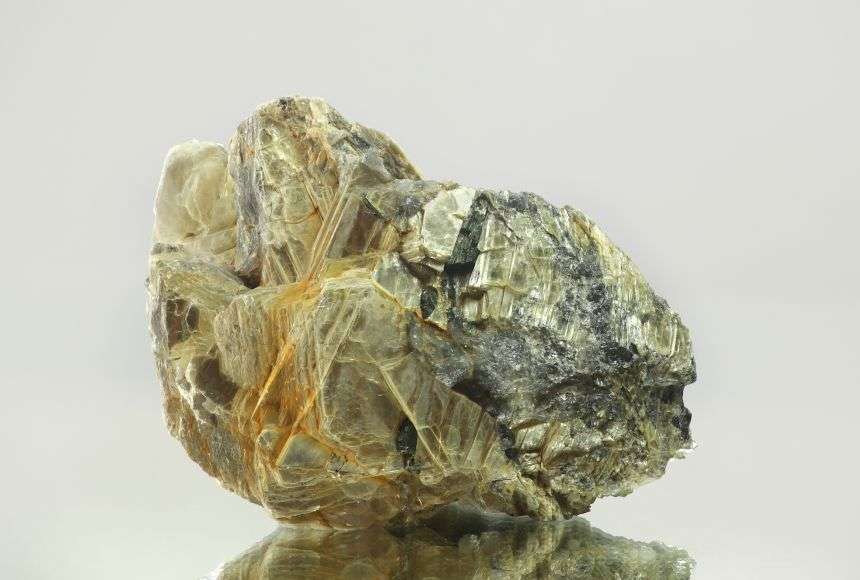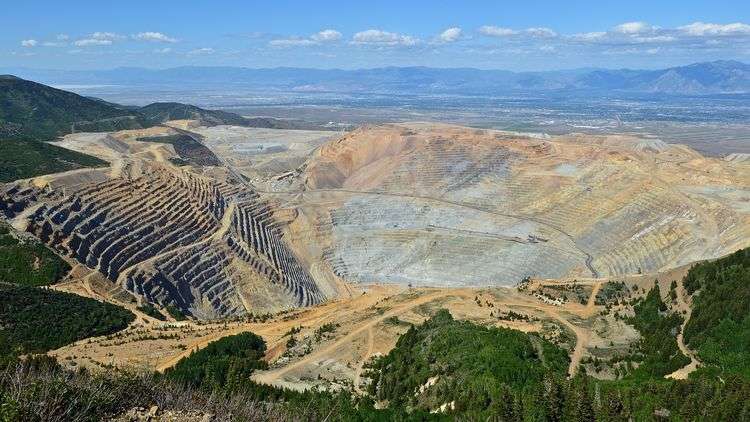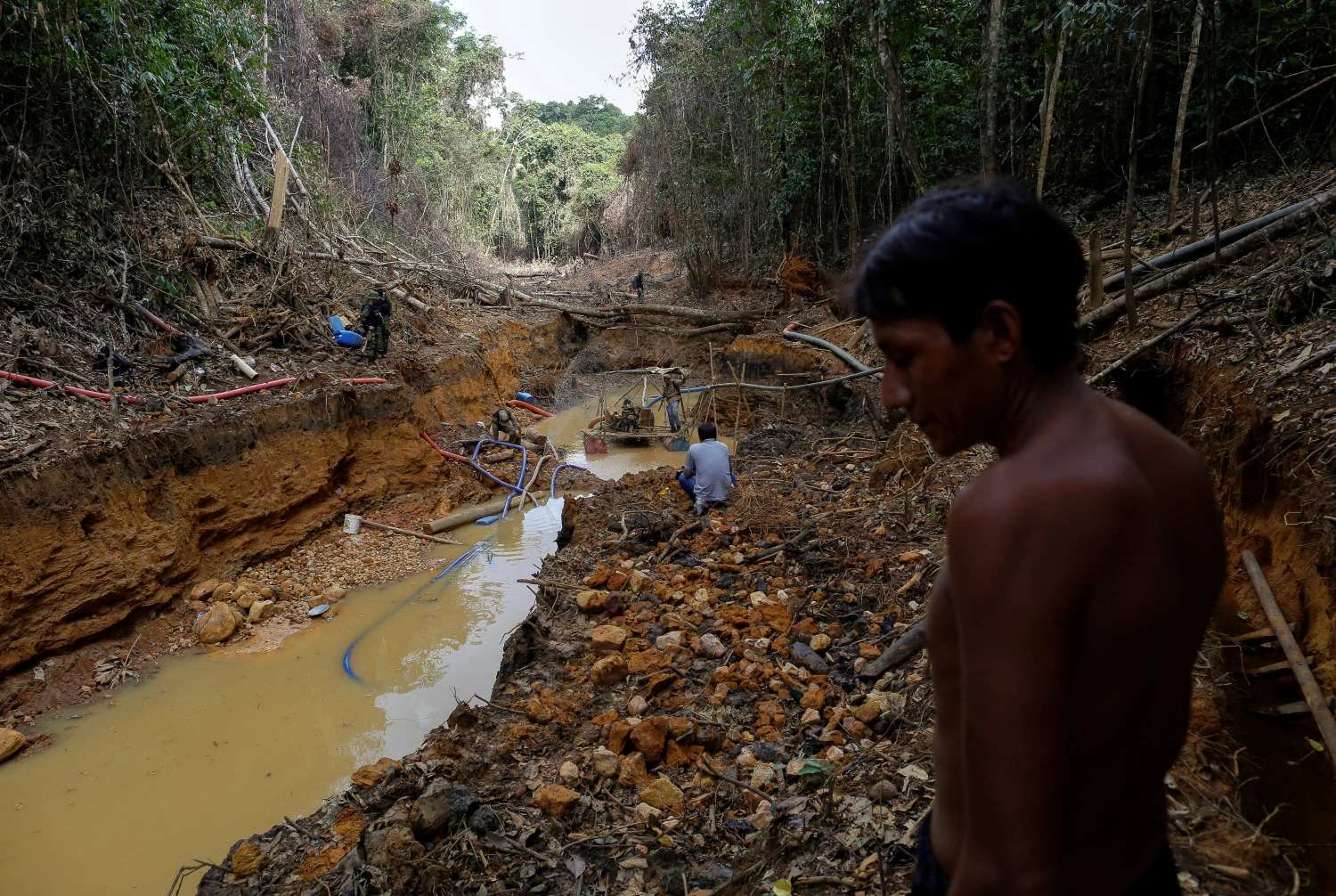The outermost layer of the Earth is known as the Earth’s crust, a layer that’s responsible for the majority of life on Earth. It supports the growth of plants, the survival of animals, the structure of our land, and the development of human civilisation. The Earth’s crust is made of four major components known as the Earth’s materials. These materials include minerals, rocks, soil, and water.
What are Earth’s materials and Minerals?
Minerals
Precious minerals are inorganic, naturally occurring materials that form through natural geologic processes. Minerals come in certain shapes called crystal structures. These structures include cubic, triclinic, tetragonal, and hexagonal crystals. Some examples of minerals include rock salt, quartz, mica, calcite, gypsum, iron ore, gold, silver, aluminum, copper, and others. Minerals in the earth mix with other unwanted rocks and minerals. However, they are only valuable in their pure forms.

Source: Shutterstock
Soil
As another component of the Earth’s materials, soil is the combination of broken-down minerals, rocks, and decomposed organic matter. Broken-down minerals and rocks are created as a result of larger minerals and rocks. Soil is then split into small pieces due to weathering or erosion. Soil is vital for sustaining plant growth.
Rock
Rocks are specified as naturally created collectives of mineral-like instances or minerals. The formation of rocks determines their classification. There are three types of rocks: sedimentary, igneous, and metamorphic. Rocks can also contain organic materials such as fossilised plants or animals.
Water
Water is the most fundamental substance on Earth. We need it to survive. Humans use water for agriculture, drinking, cooking, and electricity generation. We also use water in many industrial processes and it is, therefore, essential to the state of the economy. For all of these reasons, water is an essential natural resource that demands protection.

Source: Shutterstock
Global Distribution
Due to Earth’s varied geology, ore resources are unevenly distributed around the world. The mining sector is more successful in certain regions than in others. The majority of the supply of commodities is concentrated in several areas of the world. This can have an impact on global politics.
For instance, the United States owns around 50% of the global molybdenum supply. The Democratic Republic of the Congo produces just about all of the world’s cobalt. Additionally, Australia produces roughly a quarter of the world’s aluminum, while Zaire produces roughly half of the cobalt. Furthermore, China is responsible for around 61% of global mine production, although other countries have significant reserves. Rich in mineral resources, South Africa controls 90% of the world’s platinum, 50% of the world’s gold, and 75% of the world’s chromium. Bolivia and Brazil produce the majority of the world’s tin.

Source: USRA
Impacts of Extracting Earth’s Materials and Minerals
Mining is the process of extracting valuable mineral resources from the Earth and the ocean. The pure mineral form comes from the processing and refining of extracted substances to separate them from unwanted rocks and other minerals. As we transform these extracted substances into valuable materials, we boost economies where they are mined and processed. For instance, Iron ore was one of the most produced mineral commodities based on volume globally in 2022, as its production stood at approximately 2.6 billion metric tonnes. Conversely, the extraction of mineral resources results in products and resources widely used in certain industries. The mining process has negative environmental and social impacts.

Source: The Brookings Institution
Mining has the potential to release harmful substances into the air and water and can lead to soil damage. Also, it pollutes water and air, harms wildlife and nature, and permanently disrupts natural landscapes. Moreover, the fact that illegal mining operations tend to be highly decentralised makes them a nest for numerous additional illicit activities. These include money laundering and drug trafficking. The negative impacts of mining cut across all levels, from local to regional and global.
“Nature makes human development possible, but our relentless demand for the Earth’s resources is accelerating extinction rates and devastating the world’s ecosystems.”
Joyce Msuya, Acting Head of UN Environment, United Nations Environment Program.
moving forward
Without a doubt, the Earth’s materials and minerals support life and meet human needs. In a constantly evolving world, they provide essential raw materials and are an important source of income and jobs. Also, they support the provision of ecosystem services necessary to develop human and social capital.
The extraction of valuable mineral resources is not going anywhere anytime soon: in fact, experts predict a new surge in metals and aggregate mining over the coming decades. Accordingly, the way we manage and use these natural resources is important. This is not only from an economic perspective but also environmentally. Visits to active or abandoned mines provide proof of this. In addition to physical damage to the land, less evident issues include soil, water, and air pollution. We can mitigate these problems by following beneficial mining practices.
Ultimately, the sustainable use of natural resources strives for balance between these dimensions: maintaining the long-term use of resources while maximising social benefits and minimising environmental impacts. We will enjoy greater prosperity and health in a world where we consume our resources responsibly.

Source: istock
why Is it essential that we focus on the earth’s materials and Minerals?
Finally, the Earth’s materials and minerals help to drive economies and constitute the foundation on which our modern society exists. Equally, the environment has changed considerably and quickly as a result of human activities exploiting natural resources due to industrialisation, and the resulting rise in population. Earth’s resources exist as limited and non-renewable, which has created a linear system.
Furthermore, due to the ongoing need to convert mineral resources into valuable products, their decreased availability may represent significant economic and societal issues, leading, for instance, to political or military conflicts. Also, mineral wealth does not automatically lead to economic prosperity and poverty reduction. Some resource-rich countries are among the poorest in the world and have high levels of corruption and conflict. We see this in countries like Congo. Hence, we need good governance, strong institutions, effective regulation, and rigorous environmental and social safeguards to realise the potential of mineral resources. A well-governed mineral wealth exploitation would fuel development, especially in developing countries.
achieving the United Nations Sustainable Development Goals (SDGs) and how they link to the earth’s materials and Minerals
Natural resources are crucial to meeting ecological and socio-economic targets within the UN Sustainable Development Goals (SDGs). The Earth’s materials and minerals link with the SDGs to ensure health and well-being, poverty reduction, and human development. The SDGs acknowledge that sustainable societies are essential to global sustainability. The Earth’s materials and resources will continue to be a major source of human livelihood, especially for the poor. This is only due to the fact that these resources support both commercial and subsistence activities and frequently function as a safety net for the poor during difficult times.
A Thrivable Framework
THRIVE Framework is a measurement tool that uses machine learning and big data to assess the sustainability performance of large entities like organisations and cities. Utilising the Ciambella chart, it examines issues and evaluates potential solutions concerning the overall goal of thrivability.
We only have one Earth, and as such, we have to reduce environmental harm from industrial activities so that we are back within the limits of the planet. Recognising that many people in the Global South are not currently having their needs met (and will therefore require greater access to materials and energy), necessitates democratic decision-making to determine which activities cease and which ones continue.
At THRIVE Project, we dedicate resources to change the debate around the environment, leading to greater well-being. Follow our informative, diverse blog and podcast series and learn about our regular, live webinars featuring expert guests in the field of sustainability, including many rich discussions on Earth’s resources. Sign up for our newsletter for regular updates.
